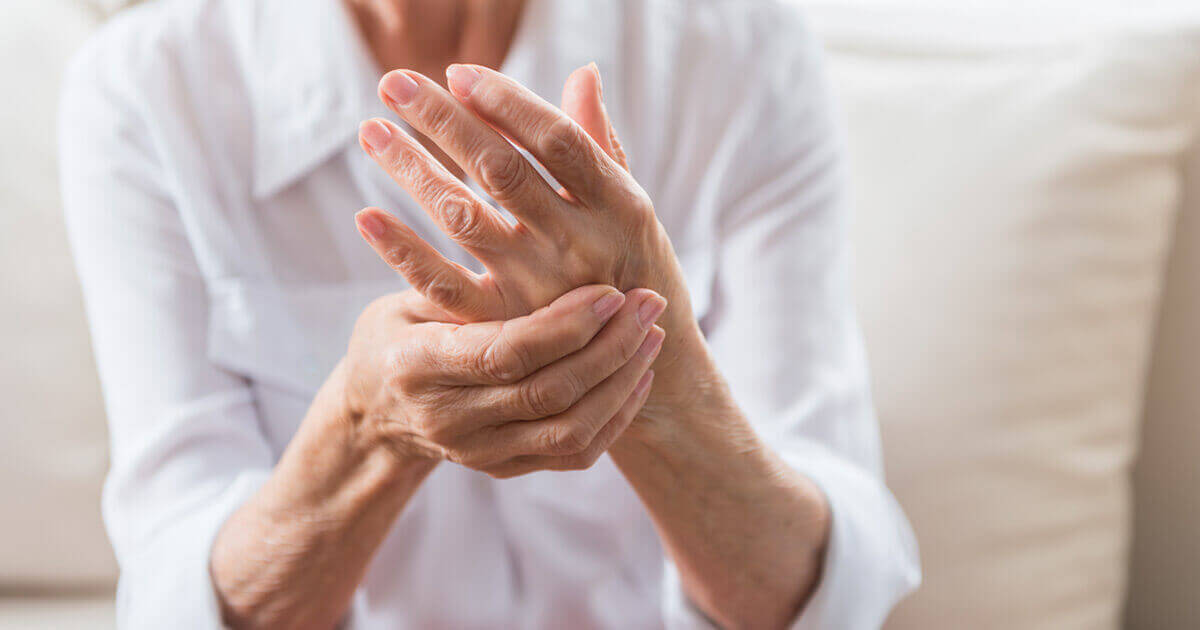Many women entering or experiencing menopause are already aware of the hormonal changes they can expect with this stage of life, but new studies suggest that certain forms of osteoarthritis may also be related to those changes. The good news is that the typical hormone replacement therapy women receive to alleviate symptoms during and after “the change” may have another benefit.
A 2018 study published in Korea suggests that hormone replacement therapy (HRT), also called menopausal hormone therapy or postmenopausal hormone therapy, may improve symptoms of osteoarthritis (OA), in the knee specifically. Researchers found that the degenerative joint condition was less prominent in patients receiving HRT than in those without it.
Symptoms of OA in women tend to become more frequent near the average menopausal age of 50, most commonly in the hands. Women with artificially induced menopause, such as those who have had their ovaries removed report more instances of knee and hand osteoarthritis.
Why Are Joints Affected During Menopause?
Menopausal women have lower levels of estrogen, and hormone replacements seek to replenish that deficiency. Joint tissues contain estrogen receptors, where the hormone helps to protect biomechanical structure, function, and lubrication, according to Forest Tennant, MD, a retired internist and long-time board member of PPM who has been researching hormone therapy and pain for several years. Without lubrication, cartilage degrades, and the joints become inflamed.
Researchers have found that hormones can act as anti-inflammatory agents. The goal in using hormone therapy for OA, in particular, is to slow its progression—it will not cure the disease. JoAnn Pinkerton, executive director of the North American Menopause Society (NAMS), explains: “Maintaining normal levels of the reproductive hormones estrogen and progesterone appear to decrease the joint aching and arthralgias for some women.”
How Can Hormone Replacement Therapy Help with Osteoarthritis?
Physicians have access to a growing variety of FDA-approved bioidentical hormones, which are identical on a molecular level to those found naturally in the body. Women who have had a hysterectomy are treated with estrogen alone. On the other hand, women with a uterus need progesterone as part of their therapy.
The effectiveness of HRT on osteoarthritis may depend on when treatment is begun. For example, women who are experiencing early symptoms of joint pain and inflammation who are considered to be at a higher risk of developing OA may benefit from a lower dose treatment (eg, 0.0375 mg or less of estradiol—an estrogen steroid hormone —per day).
Pinkerton points out that not all women may feel better on HRT. Side effects may include fluid retention, breast tenderness or swelling, headaches, or mood changes. “Hormone therapy has the best benefit/risk profile when started close to menopause, under age 60, or within 10 years of menopause,” she says.
Starting hormone replacement therapy after age 60, or more than 10 years from menopause, carries an increased chance of developing heart disease or stroke. Hormone therapy is not recommended for anyone already at risk of developing these conditions, because those risks will outweigh the benefits for most women, adds Pinkerton.
Associated risks of HRT are also dependent on the type, dose, and duration of use. Proper balance and dosing of estrogen and progestogen can help to alleviate any related risk of uterine or breast cancers. Transdermal options, such as patches that you apply to the skin, have been shown to carry less risk of blood clots and stroke compared to oral medications.
Can Hormone Therapy Help Rheumatoid Arthritis Too?
For women with rheumatoid arthritis (RA), the picture is not so clear. Some women have seen an improvement in their symptoms when using HRT, while others have reported that their symptoms worsen. Rheumatoid and more severe types of arthritis have an autoimmune impact on the body and need to be approached differently, explains Dr. Tennant.
Talk to Your Doctor about What Options May Work For You
Healthcare providers that specialize in menopause—known as endocrinologists—will be able to share with you the most current options for HRT, including any benefits and risks, and whether it may help your particular case of osteoarthritis. For example, Pinkerton pointed out that the FDA approved in fall 2018 a new therapy that which combinesestradiol and progesterone into an oral softgel (Bijuva, Therapeutics MD). This may be a good option for women seeking bioidentical hormone therapy, she says. In addition, both oral and transdermal synthetic FDA-approved combination products are available.
For osteoarthritis-related joint pain, Dr. Tennant is a proponent of low dose, topical remedies that can be produced at compounding pharmacies; some are branded and sold over the counter. These inexpensive creams or gels are made from bovine glands and may be placed on accessible joints such as the knee, elbow, and ankle. They often contain a combination of progestogen, testosterone, and estradiol. (Editor’s Note: Compounded products are not approved or monitored by the FDA and, thus, there may be risks associated with over -or under-dosing, contamination, or sterility.)
Final Thoughts
If you are post-menopausal and think you may be developing osteoarthritis, Pinkerton recommends maintaining a healthy weight as not to put extra stress on your joints. Low-impact exercises and physical therapy can help to increase mobility, strength, and range of motion. Eating healthy by following a regimen such as the Mediterranean diet, which is high in calcium and Vitamin D, can also be beneficial.
At the end of the day, more research is needed for a complete understanding of the long-term effects of hormone replacement therapy on helping the symptoms of osteoarthritis, but Dr. Tennant says patients can feel confident in taking low does of hormones with intermittent use. “As long as the blood levels are in the normal range, you shouldn’t have side effects,” he says. However, always check with your doctor before starting any hormone-based products as there could be drug-drug interactions with your overall treatment plan. In addition, notes Pinkerton, a woman’s needs and risks may change over time and need to be evaluated regularly.

